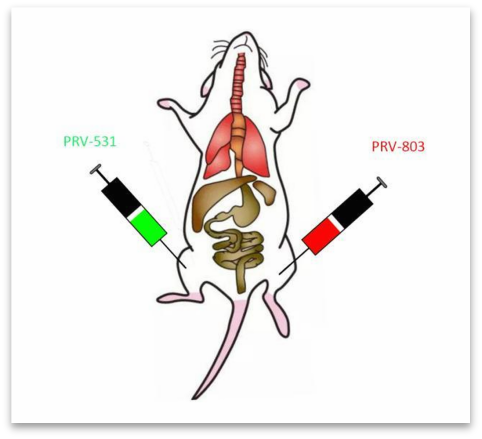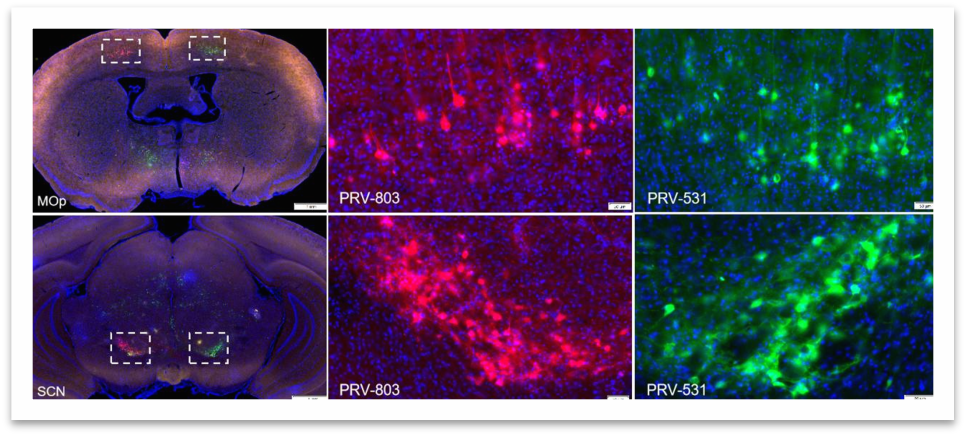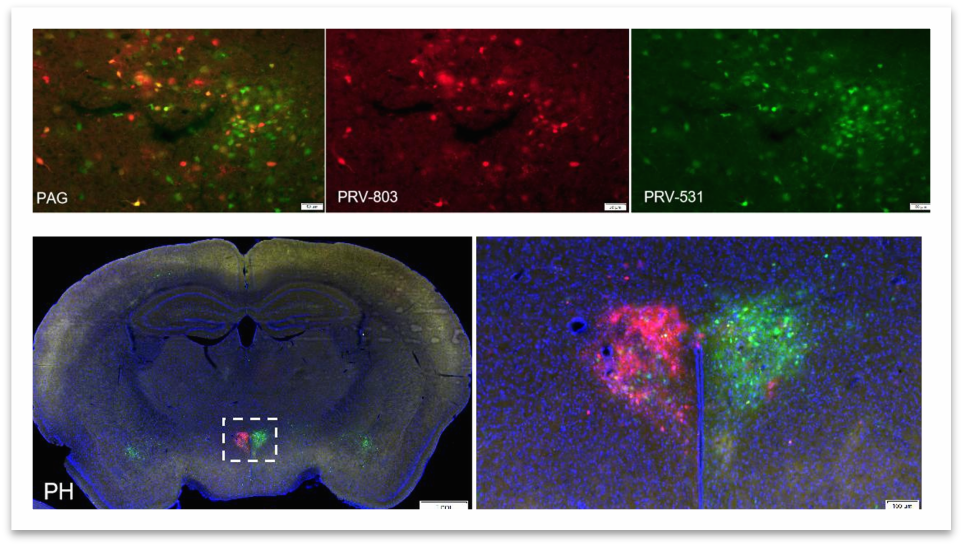- E-mail:BD@ebraincase.com
- Tel:+8618971215294
Pseudorabies virus (PRV), also known as porcine herpesvirus type 1, has a genome of approximately 150 kb linear double-stranded DNA. The Bartha strain of PRV exhibits retrogradetrans-synaptic properties. Recombinant tracing tool viruses based on the Bartha strain can strictly label neural networks through multi-level retrograde trans-synaptic pathways. After infecting neural cells, the virus replicates intracellularly and expresses target genes, with progeny viruses transporting across synapses to enter upstream neurons, initiating a new round of replication and retrograde trans-synaptic spread.
2. What can PRV do in neural circuit research?


·Experimental Objective: To investigate the neural circuits associated with and controlling urination, specifically which key brain regions are involved in the body's autonomous urination.
·Experimental Plan: The PRV (pseudorabies virus) tracer virus was injected in small amounts into the left and right sides of the bladder wall using PRV-531 (green) and PRV-724 (red); due to significant neurological symptoms and eventual death in animals infected with PRV, the animals were closely monitored daily to ensure recovery to a normal state post-surgery. When in a near-death condition, the animals were subjected to cardiac perfusion to extract the brain.
·Experimental Results: About five days after the virus injection, the animals exhibited notable neurological symptoms. Researchers gradually performed cardiac perfusion to extract the brain based on the observed conditions. Following the preparation of frozen sections of brain tissue, the following data was obtained. Based on the experimental results, researchers found that the primary motor cortex (M1), primary somatosensory cortex (S1), and the micturition center (PMC) have direct or indirect connections.

